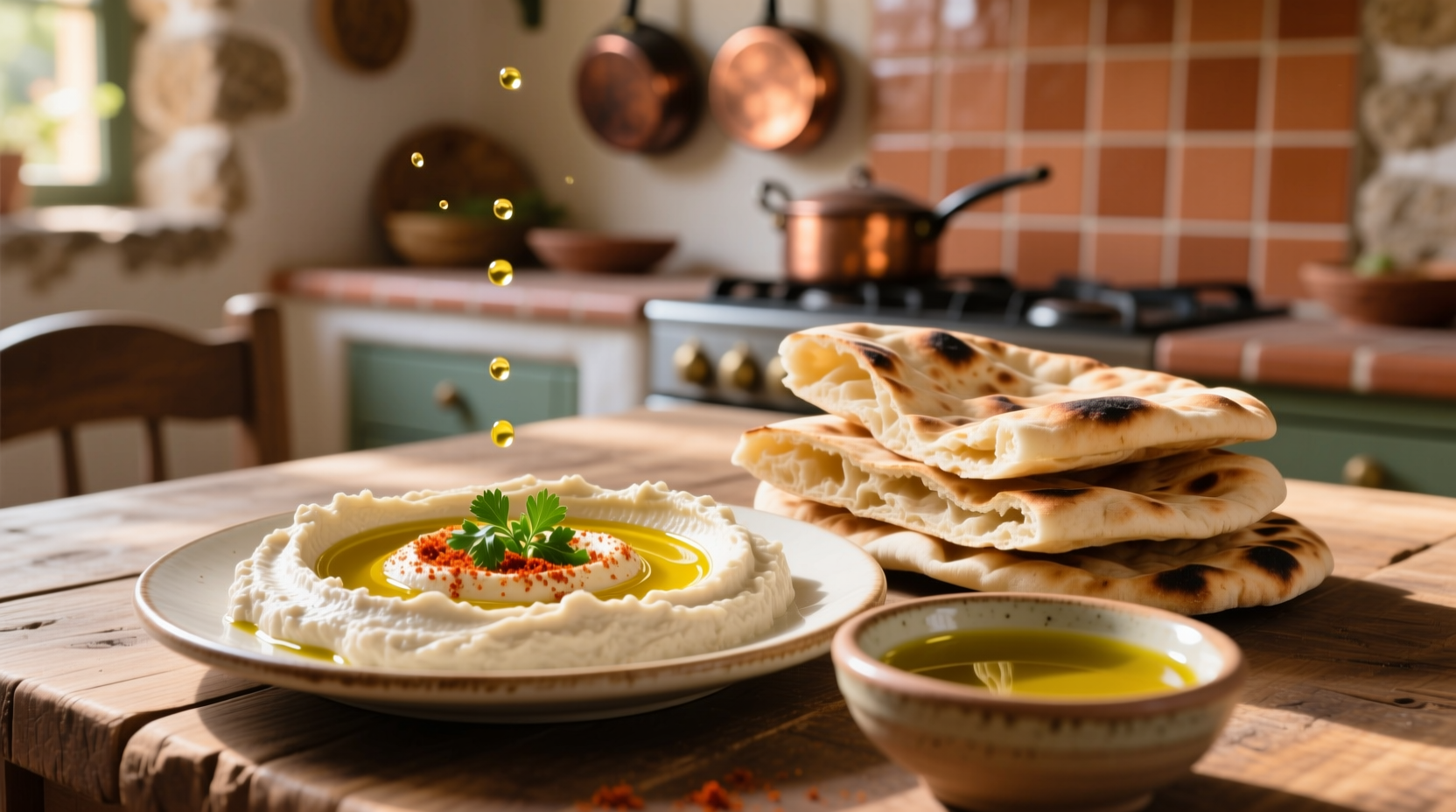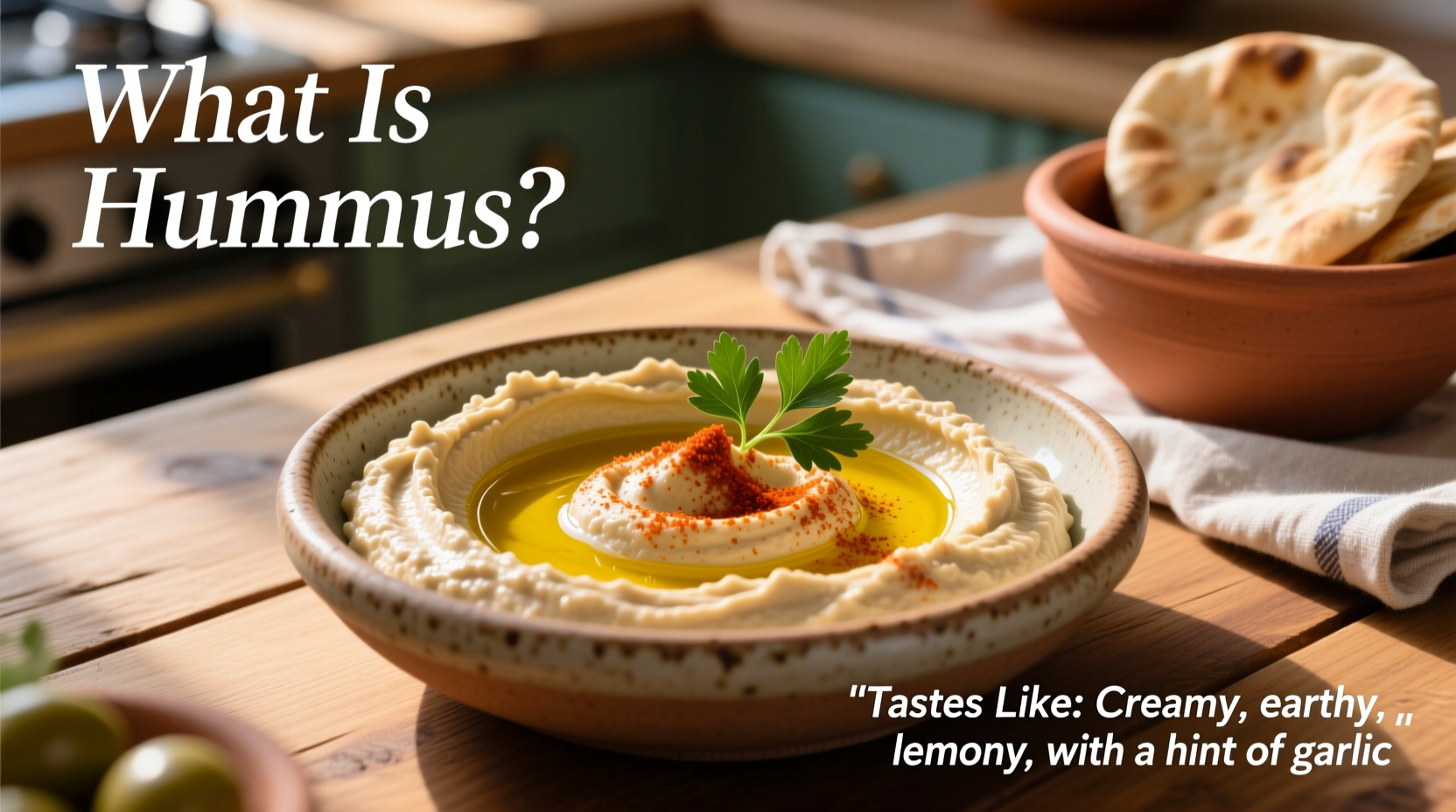For centuries, this simple yet sophisticated spread has nourished communities across the Mediterranean and beyond. Today, it's one of the world's most beloved plant-based foods, enjoyed by millions seeking both flavor and nutrition. Let's explore what makes authentic hummus special and why its taste profile continues to captivate palates globally.
The Essential Hummus Profile
At its core, hummus represents culinary harmony. The magic happens when cooked chickpeas blend with high-quality tahini, creating a creamy base that carries bright lemon notes and subtle garlic essence. Unlike many commercial versions, authentic hummus never tastes:
- Overly sour (excessive lemon)
- Bitter (poor quality tahini or overprocessed chickpeas)
- Garlicky to the point of burning
Hummus Through Time: A Culinary Journey
Understanding what is hummus and what does it taste like requires appreciating its historical evolution. Food historians have traced hummus-like preparations through several key periods:
13th Century: Earliest documented reference appears in an Egyptian cookbook, describing a dish of boiled fava beans with vinegar and oil—chickpea versions soon followed.
Ottoman Era (1500s-1900s): Hummus spreads across the Middle East, with regional variations emerging in Lebanon, Palestine, and Syria.
Mid-20th Century: Israeli immigrants introduce hummus to American markets, though authentic preparation remains rare.
1990s-Present: Global hummus revolution begins as health-conscious consumers discover its protein-rich, plant-based benefits.
Decoding Hummus Flavor: Beyond Basic Taste
When asking what does hummus taste like, most people expect a simple answer—but the reality involves multiple sensory dimensions:
Primary Flavor Notes
- Nutty: From high-quality tahini (sesame paste), providing earthy richness
- Creamy: The smooth chickpea base creates luxurious mouthfeel
- Tangy: Fresh lemon juice adds brightness without overwhelming sourness
- Subtle garlic: Just enough to enhance, never dominate
Texture Matters: Why Mouthfeel Defines Quality
Authentic hummus should feel silky smooth, never grainy or watery. The ideal texture comes from:
- Properly cooked, tender chickpeas
- Correct tahini-to-chickpea ratio (typically 1:3)
- Gradual incorporation of ice water during blending
- Traditional preparation in a stone mortar (jurn)

Hummus Variations: Regional Flavor Profiles Compared
| Region | Tahini Level | Garlic Notes | Distinctive Features |
|---|---|---|---|
| Lebanese | High (up to 50%) | Subtle | Creamiest texture, pale color, often served with ful medames |
| Israeli | Moderate | Prominent | Thicker consistency, commonly topped with paprika and whole chickpeas |
| Egyptian | Low | Minimal | Often includes fava beans (ful medames base), spicier variations |
| Commercial (US) | Inconsistent | Variable | Frequently contains preservatives, can taste metallic or overly sour |
When Hummus Tastes "Wrong": Common Flavor Issues
Understanding what is traditional hummus made of helps identify why some versions disappoint:
- Bitter taste: Usually from poor quality tahini or overprocessed chickpeas
- Excessive sourness: Too much lemon or vinegar added as preservative
- Watery consistency: Incorrect chickpea-to-liquid ratio or insufficient blending
- Garlic burn: Raw garlic overpowering other flavors (traditional preparation uses minimal raw garlic)
Authentic Hummus Context: Where and How It's Traditionally Served
Knowing how would you describe the taste of hummus becomes more meaningful when understanding its cultural context. In Middle Eastern cuisine:
- Served at room temperature, never chilled
- Presented as part of mezze (appetizer spread) with fresh vegetables and pita
- Often drizzled with high-quality olive oil and sprinkled with paprika or sumac
- Traditionally eaten for breakfast in many regions, accompanied by falafel
- Rarely consumed alone—it's always part of a larger culinary experience
Bringing Authentic Hummus Home: Simple Flavor Tips
You don't need special equipment to create hummus that captures authentic hummus flavor profile. Follow these professional techniques:
- Peel your chickpeas: Removing skins creates ultra-smooth texture
- Use ice water: Gradually add during blending for creamier results
- Bloom the garlic: Mix minced garlic with lemon juice for 10 minutes before blending to mellow sharpness
- Quality tahini matters: Look for 100% sesame paste with no added oils
- Season in layers: Salt both chickpeas during cooking and in final blend
Why Hummus Deserves Your Culinary Attention
Beyond satisfying curiosity about what is hummus and what does it taste like, this ancient food offers remarkable benefits. With 7 grams of plant-based protein and 4 grams of fiber per serving, it's nutritionally impressive while remaining incredibly versatile. Whether you're exploring Middle Eastern cuisine or seeking healthy snack alternatives, understanding hummus' true flavor profile opens doors to authentic culinary experiences that processed versions simply can't match.











 浙公网安备
33010002000092号
浙公网安备
33010002000092号 浙B2-20120091-4
浙B2-20120091-4